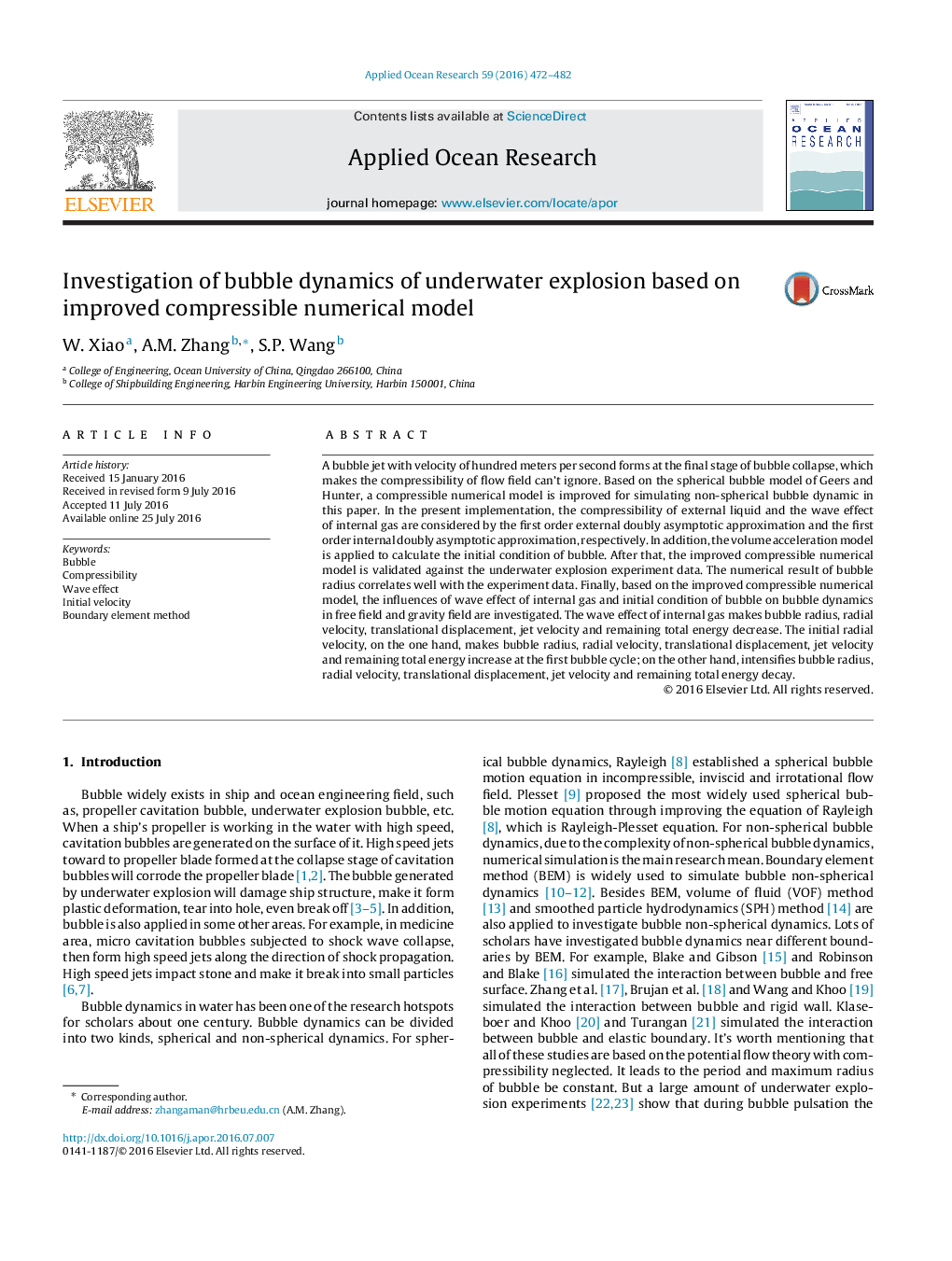| Article ID | Journal | Published Year | Pages | File Type |
|---|---|---|---|---|
| 1719795 | Applied Ocean Research | 2016 | 11 Pages |
•Based on the spherical bubble model of Geers and Hunter, a compressible numerical model is improved for simulating non-spherical bubble dynamic.•The influences of wave effect of internal gas and initial bubble condition on bubble dynamic have been investigated.•The numerical results considered wave effect of internal gas and initial bubble velocity are more close to the experimental results.
A bubble jet with velocity of hundred meters per second forms at the final stage of bubble collapse, which makes the compressibility of flow field can’t ignore. Based on the spherical bubble model of Geers and Hunter, a compressible numerical model is improved for simulating non-spherical bubble dynamic in this paper. In the present implementation, the compressibility of external liquid and the wave effect of internal gas are considered by the first order external doubly asymptotic approximation and the first order internal doubly asymptotic approximation, respectively. In addition, the volume acceleration model is applied to calculate the initial condition of bubble. After that, the improved compressible numerical model is validated against the underwater explosion experiment data. The numerical result of bubble radius correlates well with the experiment data. Finally, based on the improved compressible numerical model, the influences of wave effect of internal gas and initial condition of bubble on bubble dynamics in free field and gravity field are investigated. The wave effect of internal gas makes bubble radius, radial velocity, translational displacement, jet velocity and remaining total energy decrease. The initial radial velocity, on the one hand, makes bubble radius, radial velocity, translational displacement, jet velocity and remaining total energy increase at the first bubble cycle; on the other hand, intensifies bubble radius, radial velocity, translational displacement, jet velocity and remaining total energy decay.
